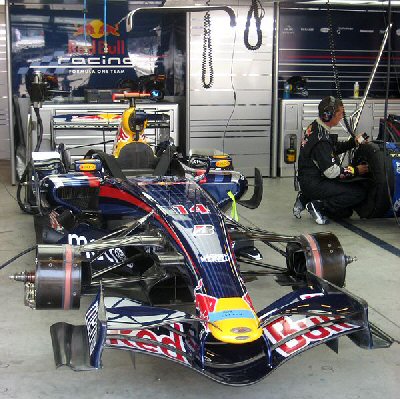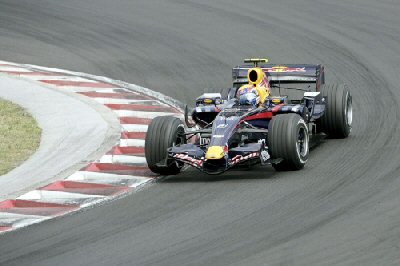Racing with Red Bull
Data integration cuts Formula One design time.
Latest News
August 9, 2007
By Sara Ferris
Red Bull Technology (Milton Keynes, UK) provides design and manufacturing services to Red Bull Racing and Toro Rosso, two Formula One racing teams sponsored by the Red Bull energy drink company. Red Bull Technology has assembled an array of state-of-the-art design and manufacturing tools to assist in designing, testing, and manufacturing its race cars. The company is always seeking new ways to capture and use product knowledge to help make better decisions.
Formula One cars are made up of around 7,000 parts, many using advanced technology. Most parts (close to 90%) are designed anew each season, and many parts undergo further updating during the racing season, which spans 17 races in 9 months.
Designers must work within strict rules and meet tight deadlines. The race cars must be ready to roll on race day. Integrating the many disciplines involved in the process helps Red Bull Technology meet these challenges.
The team’s current Formula One car was developed entirely in software, beginning with a definition of functional requirements and Formula One regulations and proceeding to an assembly tree and geometric part models for the entire vehicle. The company used UGS NX to model the car and required tooling, as well as to perform vehicle dynamics simulations and stress analysis. Teamcenter handles document management and collaboration.
An IBM cluster is dedicated to CFD (computational fluid dynamics) analysis of aerodynamics, supplemented by wind-tunnel testing of prototypes.
To provide the design team with quicker access to wind-tunnel test results, Red Bull Technology uses a portable CMM (coordinate measurement system) from Leica Geosystems. The LTD800 Laser Tracker and portable T-probe are built into the company’s new wind tunnel (the company has two). Before, Red Bull Technology used height gauges to set up the race car in the wind tunnel, a process that took two hours. With the CMM, it takes 20 minutes to set up the car. With around 12,000 testing sessions per year, the time savings add up quickly.
 |
| The RB3 Formula One Car undergoes extensive testing and fine-tuning. |
The laser trackers are also used for tool and composite component inspections, car legality checks and specific car measurement checks.
Red Bull Technology makes around 80% of car components in-house. Metal parts are machined directly from CAD models. All parts made are subject to rigorous inspection and quality checks. For this purpose, the company recently added two DEA global CMMs from Hexagon Metrology.
The technology package also includes Hexagon TESASTAR probe heads fitted with touch trigger scanning probe kits for the geometric measurement and inspection of complex surfaces. The kits’ analog scanning sensors will provide Red Bull Technology with tactile data collection in point-to-point and continuous-path modes.
Red Bull Technology will use the new technology to generate inspection part programs in advance of the arrival of components. The goal is to reduce lead times and CMM bottlenecks.
“We chose Hexagon because we needed to refine our process and deliver accurate, clear, easily-understood and concise reports,” says Red Bull Technology’s quality manager Chris Charnley.
 |
| Performance data from the track is transmitted back to the Red Bull Technology engineering department. |
Subscribe to our FREE magazine, FREE email newsletters or both!
Latest News
About the Author
DE’s editors contribute news and new product announcements to Digital Engineering.
Press releases may be sent to them via [email protected].






